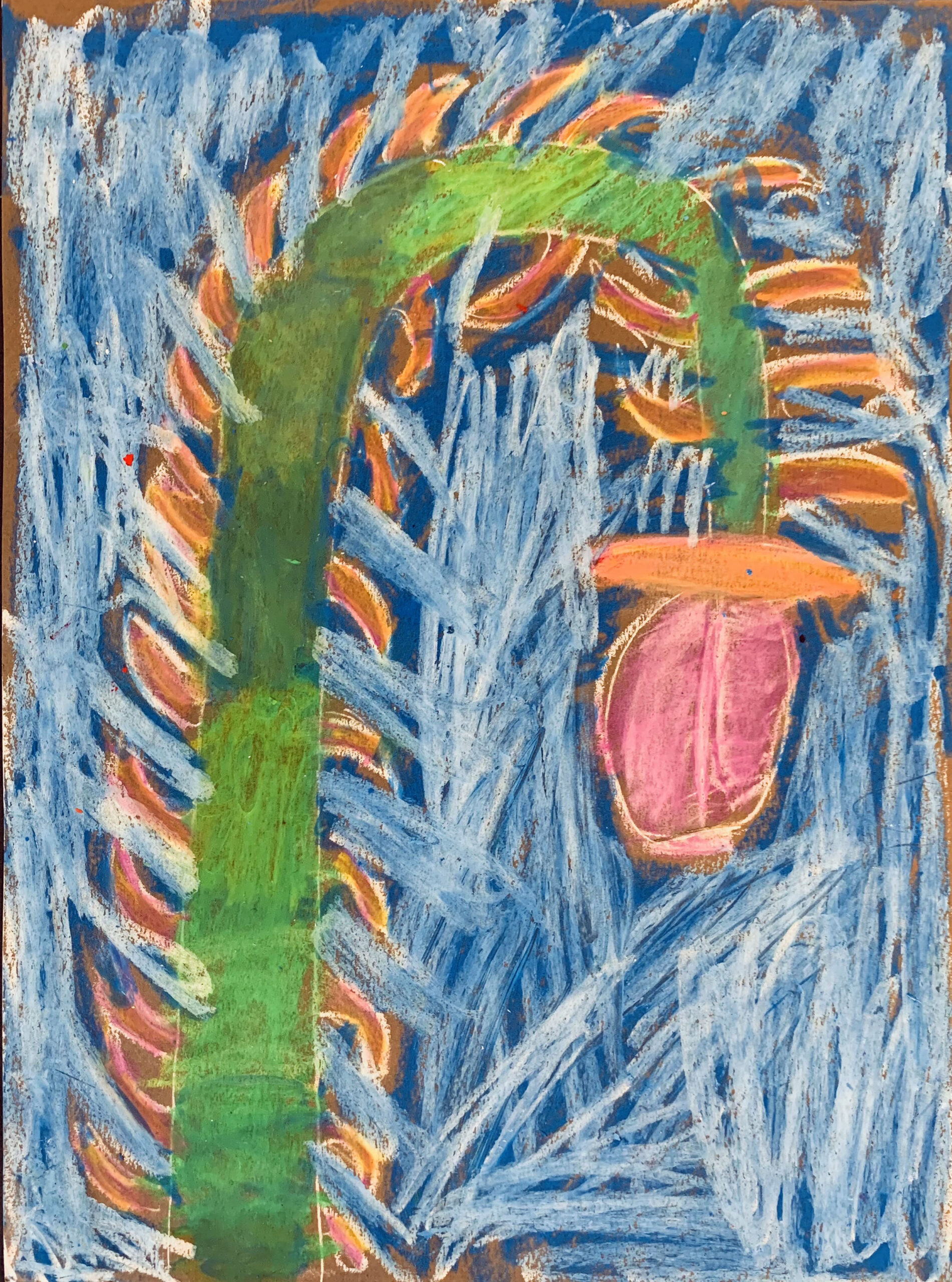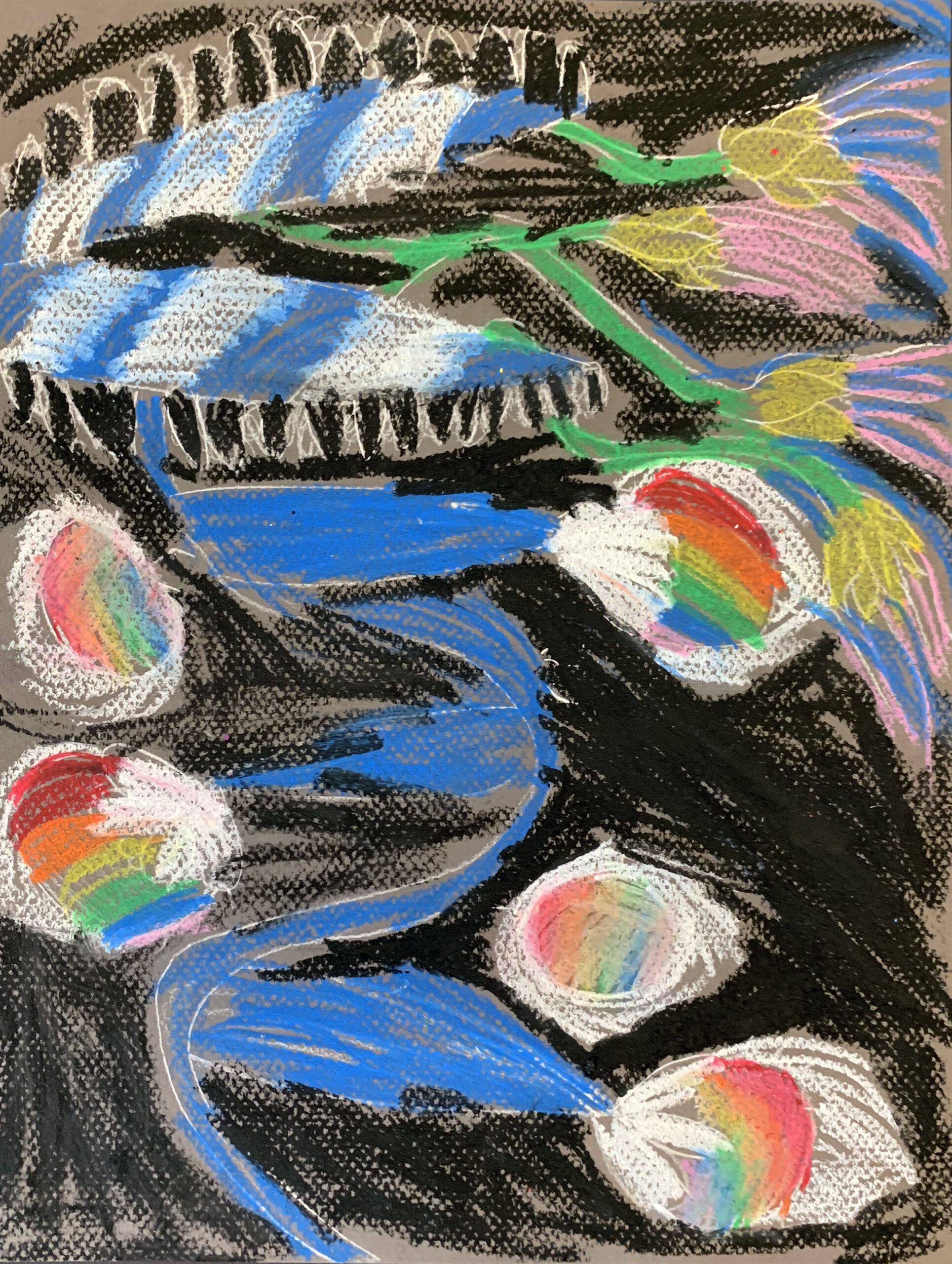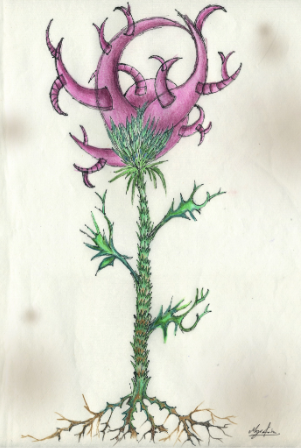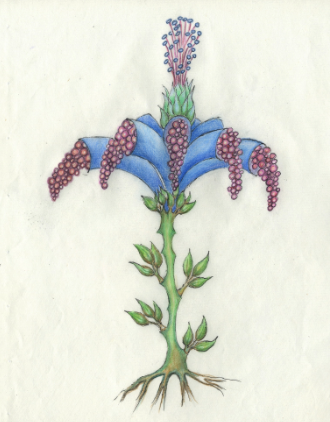Overview
Students will start to draw their own imaginary plant, exaggerating or combining different features from plants they’ve observed, focusing on drawing the larger shapes.
Case Studies



Materials and Tools
- White charcoal pencils
- Oil pastels
- 9 x 12” grey paper
Activities
Step 1: Introduction
Hello artists! In the last lesson, we drew different plants from around the world, looking closely at photos. What was it like to draw from a photo? How was it different from drawing an object from observation in the previous lesson?
In this lesson, you will create your own extraordinary plant from imagination. What does it mean to draw from imagination? How is it different from drawing from observation, or from photos? How can we use what we learned while observing natural objects and drawing plants from photos to create our own imaginary plant?
There are different ways that we can create our own plant. We can combine features from different plants. We can also exaggerate the features of plants, making them bigger or making more of them.
Step 2: Imagining Plants with Our Senses
Let’s explore ideas for your imaginary plant using our 5 senses!

- How will your plant look?
- What distinctive features will it have? Will you repeat or exaggerate any of them?
- Is your plant tall or wide?
- Is it growing upwards or outwards?
- What kind of stems, roots, seeds or leaves does it have? How many?
- How will your plant feel if you touch it?
- How do you imagine it might smell?
- Is there a part you can taste?
- Does it have fruit or flowers?
- Can it make a sound?

Step 3: Drawing your Imaginary Plant
Consider these prompts as you begin to draw your plant:
- Where on your page will you draw your plant?
- Will your drawing paper be vertical or horizontal?
- How big do you need to draw your plant to fill your paper?
- Which part of the plant will you focus on?
- What kinds of shapes will you use to draw your plant?
- What kind of lines will make the edges of these shapes?
Start by drawing the largest parts of your plant, using light lines.
Step 4: Adding Color
What colors do you imagine these parts of your plant might be? Will the colors be light or dark?
Step 5: Reflection Questions for Discussion
Questions for Individual Artists
- What distinctive features did you add to your plant?
- How did you make your plant imaginary?
Questions for Whole Group
- What lines or shapes did this artist use?
- What do you notice about this plant that makes it imaginary?
Vocabulary
Imagination
Exaggerate
Resources



Resource: The Garden of Fantasy Flora: 80 Plants from Fiction: https://www.avasflowers.net/infographic-garden-of-fantasy-flora
Adaptations
For Multilingual Learners
Have students turn-and-talk to share the plan for their plant with a partner. What features will they combine? What will they exaggerate?
Have students create a graphic organizer to plan their plant, naming plant features that they will use. Let students know that their plans can be changed as they work.

